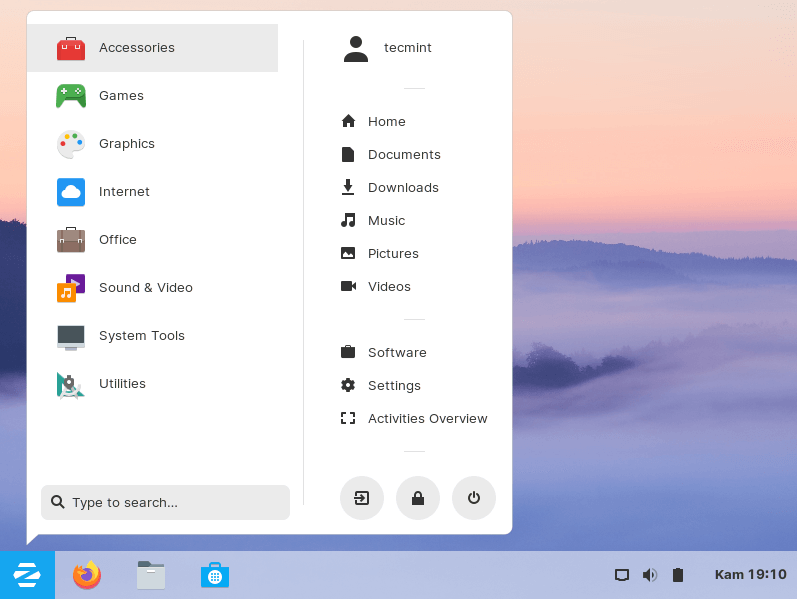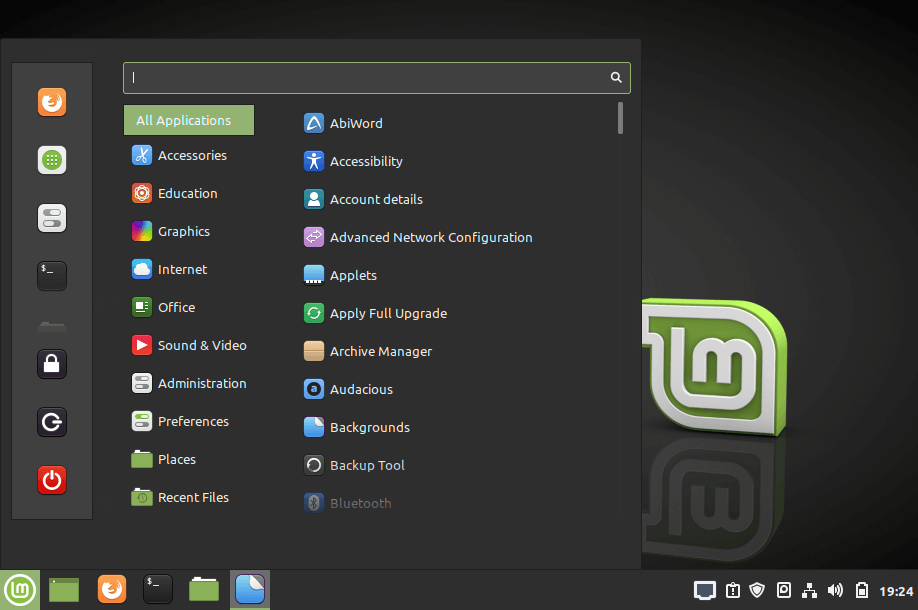1. Zorin OS
Based on Ubuntu and Developed by Zorin group, Zorin is a powerful and user-friendly Linux distribution that was developed with new Linux users in mind. This is notably clear from its neat, simple, and intuitive UI whose look-and-feel closely resembles Windows 7 and 10. For Windows or macOS users who are trying their hand out in Linux, this distribution comes highly recommended.
Zorin OS Desktop
Zorin has been around since 2009, with the latest release being Zorin 15.2 which is available in 4 editions namely: Ultimate, Core, Lite, and Education.
The Core, Lite, and Education editions are free for download with the Ultimate Edition going for only $39. Education and Ultimate editions ship with both GNOME and XFCE desktop environments. Core edition is only available in GNOME while Lite comes with the XFCE environment.
All editions come packed with office productivity software such as LibreOffice alongside useful utilities and applications to get you started. Zorin is also secure with periodic security patches and feature updates to address any security flaws and improve the performance of the system.
Zorin also comes highly recommended for old PCs or systems with low CPU and RAM specifications.
Zorin OS Requirements
Minimum system requirements include:
- 1Ghz dual-core CPU
- 2GB RAM (512Mb for Lite edition)
- 10GB hard disk space ( 20GB for Ultimate Edition)
- Minimum resolution of 800 x 600 ( 640 x 480 for Lite edition)
If you are a newcomer to Linux, consider giving Zorin a test run and enjoy the sleek UI, stability, and wonderful system performance.
2. Linux Mint
Linux Mint is free and open-source that was built with a focus on desktop users. Based on Ubuntu Mint enjoys a vibrant community of developers who work round the clock to deliver a stable, fully-featured, customizable, and secure system.
Linux Mint Desktop
Right from the start, Mint provides an elegant and sleek interface that is easy to interact with. A simple click of the Start button at the bottom left corner reveals a rich menu replete with your favorite applications, storage locations, and various settings that you can use to tweak your system to your desired preference.
On the taskbar, be sure to find status icons such as the Network status icon, Update manager, volume, battery usage, and date icons just as you would find on a Windows 7 or 10 system.
With Linux Mint, everything works out-of-the-box with full multimedia support, managed system updates using the Update Manager tool, and a software manager repository where you can install your favorite applications such as Skype, Discord and VLC media player.
#linux distros #linux distros


